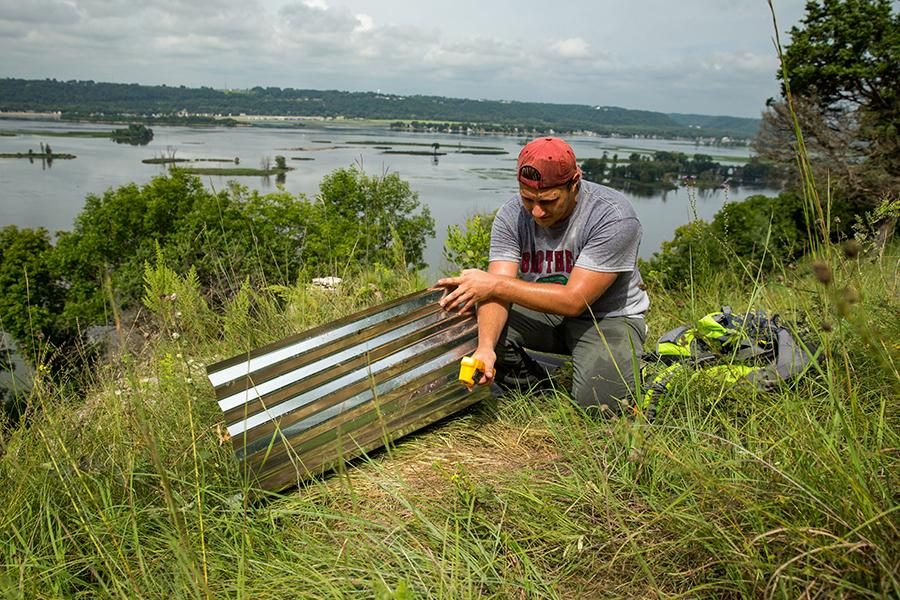Student surveys snake fungal disease at Eagle Valley Preserve
Building off successful research conducted on campus in the spring, the University of Wisconsin-Platteville’s department of biology extended its research on snake fungal disease, an emerging infectious disease, further in the region. Caleb Cizauskas, a senior geography major from Sheboygan, Wisconsin, spent this summer researching at Eagle Valley Preserve near Glen Haven, Wisconsin. Cizauskas was assisted by Dr. John Peterson, assistant professor of biology. This project was funded by a $27,000 grant from the Kohler Trust for Preservation.
Cizauskas learned of the opportunity for the research through his involvement with Animal House and an outreach event he attended at Belmont Elementary School.
“We talked with the students about research, nature and awareness,” Cizauskas said. “Dr. Peterson was there because he is involved with Animal House, and he asked if I had an interest in working on a snake project this summer. I immediately said, ‘Yes, I’d love to. That would be awesome!’. That is how it all began.”
Cizauskas placed boards made from plywood, tin and asphalt in the preserve to attract snakes. When he found snakes underneath the boards, he recorded what the material was that the snake hid under and swabbed the snake’s snout to test later for the disease. Peterson served as an advisor for this project.
“Dr. Peterson allowed me to manipulate and execute the project in my own way,” Cizauskas said. “I set up the days that I would check the boards, how often I would check them and where they would be placed. I was in charge of going out and collecting the data and entering the data into a spreadsheet. With my background in geographical information systems, I applied the data into a visual representation through mapping. At the end of the semester, I will look at the data to determine what is happening in the location to determine where the project will lead next.”
While researching, Cizauskas found three western worm snakes, a species that is rare in Wisconsin. This finding is significant because it expands the range that this species inhabits.
“Before we placed boards at the site, I was lifting up rocks in a few small prairies to see if I could find any snakes,” Cizauskas said. “I found a small black snake that was different from others I found. When I noticed the red belly, we knew that it was unique to this area.”
This fall, Cizauskas will continue collecting samples at Eagle Valley Preserve once a week and assist with checking the boards at Memorial Park. Cizauskas’ samples will be sent for examination along with the samples completed at Memorial Park. He will also examine the frequency of snake activity under the boards as the seasons change.
“Once we get the information back, we will begin conducting analyses and working toward our end results,” Cizauskas said. “When the data is analyzed, we plan to write a publication of our results.”
During Cizauskas’ sophomore year, he took Planet Earth with Dr. Chris Underwood, assistant professor of geography; this experience shifted Cizauskas’ career path toward the natural sciences.
“I enjoyed getting involved in high-impact projects where I can apply my learning,” Cizauskas said. “The biggest part of research is going out in the field and doing lab work. It can be gruesome and repetitive, but it is all part of the process. Once you get to the end result, it is rewarding and amazing to think that you’ve figured this out. It is truly fulfilling.”




